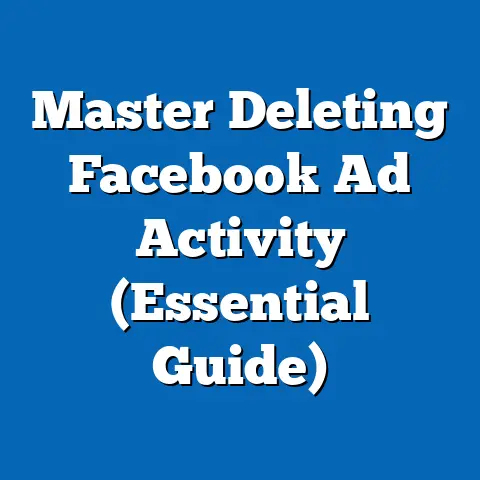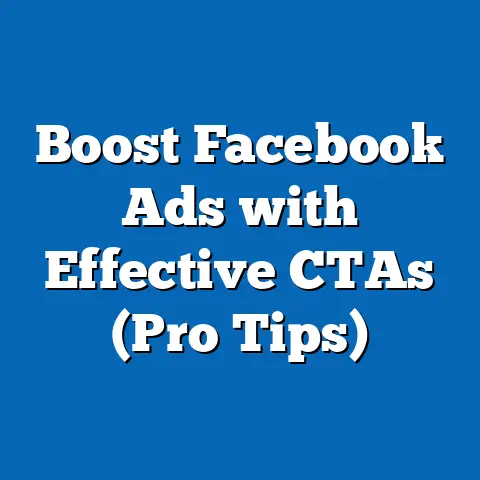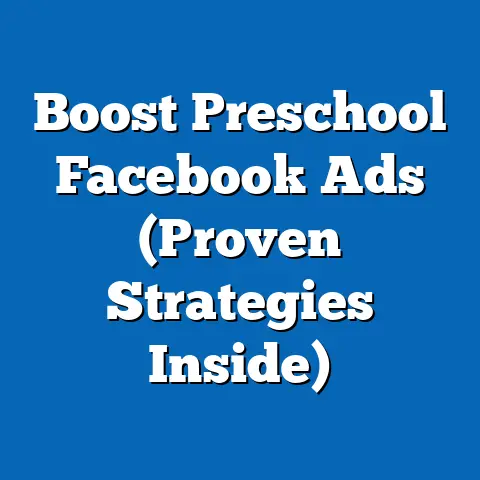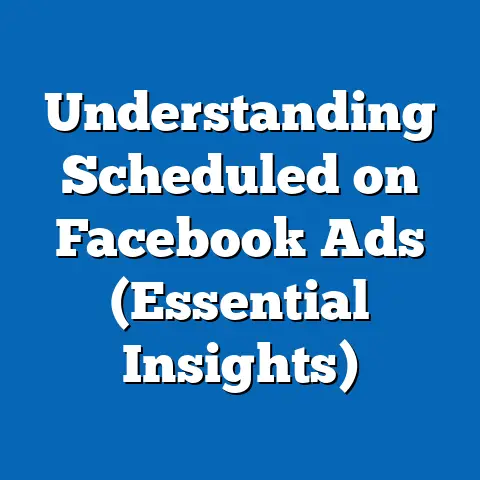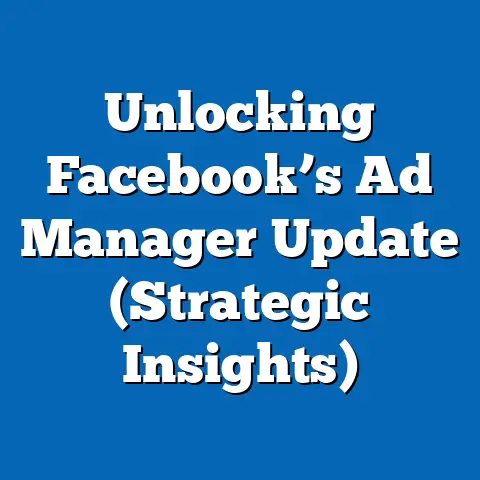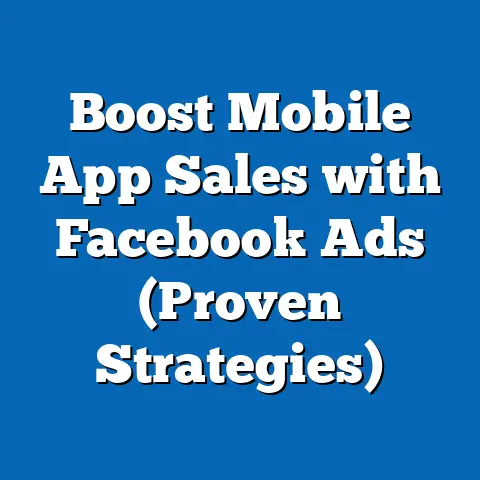Eliminate Facebook Wall Ads (Proven Strategies Revealed)
Are you tired of throwing money into the Facebook advertising abyss, only to see your ads ignored and your budget drained? Let’s face it, many businesses are struggling with their Facebook ad performance, and a big culprit is often the over-reliance on what I call “Wall Ads” – those generic, uninspired ads clogging up users’ newsfeeds.
I’ve seen it happen time and time again. Businesses, often smaller ones, think they’re doing the right thing by putting their product or service in front of as many eyes as possible. But the reality is, bombarding users with irrelevant or poorly designed ads is a surefire way to waste your advertising budget, damage your brand image, and ultimately, fail to achieve your marketing goals.
Imagine a local bakery, spending a significant portion of their marketing budget on a Facebook ad showcasing a generic image of bread, targeted at everyone in their city. They’re not seeing the results they hoped for. Clicks are low, conversions are even lower, and they’re left wondering where their money went. This is the reality for many businesses stuck in the “Wall Ad” trap.
Understanding the Problem: Why Wall Ads Fail
What are Facebook Wall Ads?
Facebook Wall Ads, as I define them, are those generic, often poorly targeted ads that primarily rely on appearing in users’ newsfeeds (the “Wall”). They often lack personalization, compelling visuals, or a clear understanding of the audience they’re trying to reach. Think of those ads that feel like they’re shouting at you, rather than having a conversation.
These ads often share these characteristics:
- Broad Targeting: Targeting everyone and no one simultaneously.
- Generic Creative: Using stock photos or uninspired visuals that don’t resonate with the audience.
- Weak Messaging: Lacking a clear value proposition or call to action.
- Over-Reliance on the Newsfeed: Ignoring other potentially more effective placements.
While the newsfeed is a crucial part of Facebook, treating it as the only place to advertise is a massive mistake.
Why Are Businesses Struggling with Wall Ads?
The core issue is that Wall Ads often prioritize quantity over quality. Businesses focus on reaching a large audience without considering whether that audience is actually interested in their product or service. Here’s a breakdown of the common reasons behind their failure:
- Poor Targeting: Casting too wide a net. Without precise targeting, your ad is shown to people who simply aren’t interested, leading to low click-through rates (CTR) and wasted impressions.
- Irrelevant Content: Using generic ad copy and visuals that don’t speak to the specific needs and interests of the target audience. People scroll past ads that don’t grab their attention.
- Lack of Personalization: Failing to tailor the ad experience to individual users. In today’s digital landscape, personalization is key to cutting through the noise.
- Ignoring Ad Fatigue: Showing the same ad to the same people too many times. This leads to ad blindness and can even irritate potential customers.
- Ineffective Bidding Strategies: Using bidding strategies that don’t align with your campaign goals. Optimizing for impressions instead of conversions, for example, can lead to a high number of views but few actual sales.
According to a recent study by WordStream, the average CTR for Facebook ads across all industries is around 0.9%. This means that less than 1% of people who see a typical Facebook ad actually click on it. For Wall Ads, this number is often even lower. This is a clear indicator that many businesses are struggling to capture the attention of their target audience.
The Data Doesn’t Lie: Wall Ad Performance Metrics
Let’s look at some key metrics to illustrate the problem:
- Click-Through Rate (CTR): As mentioned above, low CTR is a hallmark of Wall Ads. If your CTR is significantly below the industry average, it’s a sign that your targeting and ad creative need improvement.
- Conversion Rate: The percentage of people who click on your ad and then complete a desired action, such as making a purchase or filling out a form. Low conversion rates indicate that your ad is not effectively driving the desired outcome.
- Cost Per Click (CPC): The amount you pay each time someone clicks on your ad. If your CPC is high, it means you’re paying a lot to get people to your website, but they may not be qualified leads.
- Relevance Score: Facebook’s rating of how relevant your ad is to your target audience. A low relevance score indicates that your ad is not resonating with the people you’re trying to reach.
Takeaway: The data clearly shows that poorly managed Wall Ads are often a drain on resources, delivering lackluster results. The key is to shift your focus from simply getting your ad seen by as many people as possible to ensuring it’s seen by the right people and that it resonates with them.
Audience Fatigue and Negative Perceptions
Constantly showing the same generic ad to the same people can lead to “ad fatigue.” This happens when users become desensitized to your ad, and it no longer captures their attention. Even worse, it can create negative associations with your brand. People may start to see your brand as intrusive or annoying, which can lead to them actively avoiding your products or services.
I once worked with a client who ran a series of overly frequent, poorly targeted ads for a new product launch. While they initially saw a spike in traffic, they soon experienced a significant drop in engagement and an increase in negative comments. Users complained about seeing the same ad over and over again, and some even accused the brand of being “spammy.”
The Psychology of Intrusive Advertising
Intrusive advertising taps into a psychological phenomenon known as “cognitive reactance.” This is the feeling of resistance that people experience when they feel their freedom of choice is being threatened. When an ad feels overly aggressive or manipulative, it can trigger this reactance, leading people to reject the message and the brand behind it.
Furthermore, excessive advertising can lead to “ad blindness,” a phenomenon where users consciously or unconsciously ignore ads, even if they’re relevant to their interests. This is because their brains have learned to filter out the noise of constant advertising.
Marketer’s Perspective: The Frustration is Real
I’ve spoken to countless marketers who have struggled with the negative impact of Wall Ads. Here’s what one marketing manager told me:
“We were so focused on getting our brand out there that we didn’t realize we were actually turning people off. We were running the same ad over and over again, and people started complaining. We quickly realized that we needed to change our approach and focus on delivering more relevant and engaging content.”
Takeaway: Remember, your advertising is a reflection of your brand. Poorly managed Wall Ads can create a negative impression, alienate potential customers, and ultimately damage your long-term success. It’s crucial to prioritize quality over quantity and focus on delivering a positive ad experience.
Proven Strategies to Eliminate Ineffective Wall Ads
Now that we understand the problem, let’s dive into the solutions. Here are five proven strategies you can implement to eliminate ineffective Wall Ads and start seeing real results:
Strategy 1: Shift to Audience-Centric Advertising
The foundation of any successful Facebook advertising campaign is a deep understanding of your target audience. Stop thinking about your product or service and start thinking about the people you’re trying to reach.
- Create Audience Personas: Develop detailed profiles of your ideal customers. Include information such as their demographics, interests, behaviors, pain points, and motivations. This will help you tailor your ad copy and visuals to resonate with them on a personal level.
- Conduct Market Research: Use surveys, focus groups, and social media listening to gather insights into your target audience’s preferences and needs. This will help you identify the topics they’re interested in and the language they use.
- Analyze Customer Data: Examine your existing customer data to identify patterns and trends. This can reveal valuable insights into their purchasing habits, demographics, and interests.
For example, let’s go back to our local bakery. Instead of targeting everyone in their city, they could create audience personas based on their existing customers. They might have one persona for young professionals who are looking for a quick and healthy lunch, and another persona for families who are looking for a special occasion cake. By tailoring their ads to these specific personas, they can increase their relevance and engagement.
Strategy 2: Utilize Facebook’s Advanced Targeting Features
Facebook offers a wealth of advanced targeting options that allow you to reach specific segments of your audience with laser precision.
- Custom Audiences: Upload your existing customer data (email lists, phone numbers) to create custom audiences. This allows you to target people who have already interacted with your brand.
- Lookalike Audiences: Create lookalike audiences based on your existing custom audiences. This allows you to reach people who share similar characteristics and behaviors with your best customers.
- Demographic Targeting: Target people based on their age, gender, location, education, income, and other demographic factors.
- Interest Targeting: Target people based on their interests, hobbies, and activities.
- Behavior Targeting: Target people based on their online behaviors, such as their purchasing habits and the websites they visit.
For example, the bakery could use custom audiences to target people who have previously purchased a cake from them. They could then create a lookalike audience based on this custom audience to reach new customers who are likely to be interested in their cakes.
Strategy 3: Embrace Creative Ad Formats
The newsfeed is saturated with ads, so you need to find ways to stand out from the crowd. Experiment with different ad formats to see what resonates best with your audience.
- Video Ads: Video ads are highly engaging and can be used to tell a story, showcase your product, or provide valuable information.
- Carousel Ads: Carousel ads allow you to showcase multiple products or services in a single ad.
- Collection Ads: Collection ads are designed for e-commerce businesses and allow you to showcase a catalog of products in a visually appealing way.
- Stories Ads: Stories ads are short, vertical videos or images that appear in users’ Stories feeds.
- Instant Experience Ads: Instant Experience ads are full-screen, mobile-optimized ads that provide an immersive experience for users.
The bakery could use video ads to showcase their baking process or to share customer testimonials. They could use carousel ads to showcase a variety of their products, such as cakes, pastries, and sandwiches.
Strategy 4: Optimize Ad Placement
Don’t just default to the newsfeed. Facebook offers a variety of ad placements, each with its own strengths and weaknesses.
- Facebook Newsfeed: The most common ad placement, but also the most competitive.
- Instagram Feed: A great option for visually appealing products and services.
- Facebook Marketplace: A good option for reaching people who are actively looking to buy something.
- Facebook Right Column: A less intrusive option that can be effective for brand awareness.
- Instagram Stories: A good option for reaching a younger audience.
- Audience Network: Extends your reach beyond Facebook and Instagram to a network of mobile apps and websites.
Facebook’s “Automatic Placements” feature is a great starting point. It allows Facebook to automatically optimize your ad placements based on performance data. However, it’s important to monitor your performance data and make adjustments as needed.
The bakery could test different ad placements to see what works best for them. They might find that Instagram Stories ads are particularly effective for reaching a younger audience, while Facebook Marketplace ads are more effective for reaching people who are actively looking to buy a cake.
Strategy 5: Monitor and Adapt Based on Analytics
Data is your best friend when it comes to Facebook advertising. Track your key metrics and use the data to make informed decisions about your campaigns.
- Track Key Metrics: Monitor your CTR, conversion rate, CPC, relevance score, and other key metrics on a regular basis.
- Analyze Performance Data: Identify trends and patterns in your performance data. What ads are performing well? What ads are underperforming?
- A/B Testing: Test different ad copy, visuals, and targeting options to see what works best.
- Make Adjustments: Based on your data analysis, make adjustments to your campaigns to improve their performance. This might involve changing your targeting, updating your ad creative, or adjusting your bidding strategy.
The bakery should regularly monitor their ad performance and make adjustments as needed. For example, if they see that their video ads are performing well, they might invest more in video production. If they see that their CPC is high, they might try adjusting their targeting or bidding strategy.
Takeaway: These five strategies are not a one-time fix. They require ongoing effort and attention. However, by implementing these strategies, you can eliminate ineffective Wall Ads and start seeing real results from your Facebook advertising campaigns.
Real-World Case Studies: Success Stories
Let’s look at a few real-world examples of businesses that have successfully eliminated ineffective Wall Ads and improved their overall ad performance.
Case Study 1: The Local Gym
- Challenge: The gym was running generic ads targeting everyone in their city, resulting in low engagement and few new members.
- Strategy: They shifted to audience-centric advertising by creating audience personas for different types of gym-goers (e.g., young professionals, new parents, seniors). They then created targeted ads that spoke to the specific needs and interests of each persona. They also started using video ads to showcase their facilities and instructors.
- Results: They saw a 50% increase in ad engagement and a 30% increase in new membership sign-ups.
Case Study 2: The Online Clothing Boutique
- Challenge: The boutique was relying solely on the newsfeed for their ads, resulting in ad fatigue and declining sales.
- Strategy: They started experimenting with different ad placements, such as Instagram Stories and Facebook Marketplace. They also started using carousel ads to showcase their latest collections.
- Results: They saw a 40% increase in sales and a 20% decrease in their CPC.
Case Study 3: The Tech Startup
- Challenge: The startup was struggling to reach their target audience of tech-savvy professionals.
- Strategy: They utilized Facebook’s advanced targeting features, such as custom audiences and lookalike audiences. They also started creating highly targeted ads that spoke to the specific needs and interests of their target audience.
- Results: They saw a 60% increase in qualified leads and a 25% decrease in their cost per lead.
Takeaway: These case studies demonstrate that it’s possible to eliminate ineffective Wall Ads and achieve significant improvements in your Facebook advertising performance. The key is to focus on understanding your audience, utilizing Facebook’s advanced features, experimenting with different ad formats and placements, and monitoring your performance data.
Future Trends in Facebook Advertising: What’s Next?
The world of Facebook advertising is constantly evolving. Here are some emerging trends and technologies that could impact Wall Ads in the future:
- AI-Driven Targeting: Artificial intelligence is becoming increasingly sophisticated and is being used to improve ad targeting. AI can analyze vast amounts of data to identify the most relevant audiences for your ads.
- Augmented Reality (AR) Ads: AR ads allow users to interact with your products in a virtual environment. This can provide a more engaging and immersive ad experience.
- Personalized Video Ads: Personalized video ads are tailored to individual users based on their interests and behaviors. This can significantly increase ad engagement and conversion rates.
- Focus on User Experience: Facebook is increasingly prioritizing user experience. Ads that are intrusive or annoying are likely to be penalized.
These trends suggest that the future of Facebook advertising is moving towards more personalized, engaging, and less intrusive ad experiences.
Takeaway: Staying ahead of the curve is crucial for success in Facebook advertising. Keep an eye on these emerging trends and technologies and be prepared to adapt your strategies accordingly.
Conclusion: Time to Take Action
The days of relying on generic, ineffective Wall Ads are over. By implementing the proven strategies I’ve outlined in this guide, you can eliminate these ads and start seeing real results from your Facebook advertising campaigns.
Remember, it’s not about reaching as many people as possible; it’s about reaching the right people with the right message at the right time. By focusing on understanding your audience, utilizing Facebook’s advanced features, experimenting with different ad formats and placements, and monitoring your performance data, you can unlock the true potential of Facebook advertising.
Don’t let your advertising budget go to waste on ineffective Wall Ads. Take action now to enhance your advertising effectiveness and achieve your marketing goals. Start by implementing just one or two of the strategies I’ve outlined, and then gradually expand your efforts as you see results. The future of your Facebook advertising success is in your hands. Now go out there and make it happen!

